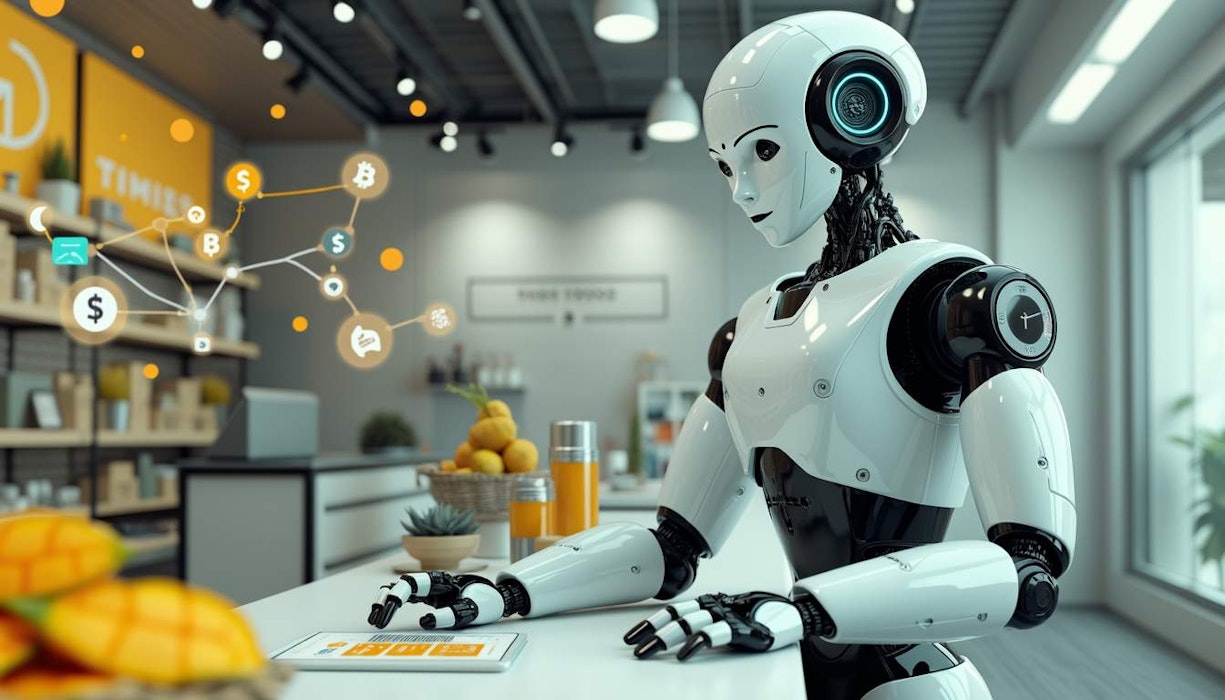As technology continues its relentless march forward, humanoid robots stand on the brink of transforming various industries. These AI-driven machines are no longer limited to the realms of science fiction. They're already impacting sectors like manufacturing and logistics in tangible ways. This exploration aims to examine how these humanoid machines, coupled with digital currency platforms, could dramatically change the operations and economics of small businesses in hyperinflation-prone economies.
The Specter of Humanoid Robots in the Industry
Humanoid robots have been evolving rapidly, driven by continuous advancements in AI. What was once a series of awkward prototypes fumbling through simple tasks has morphed into sophisticated machines capable of taking on real-world jobs from factories to warehouses. Some industry experts speculate that by the decade's close, these robots could usurp human workers in significant numbers.
“Breakthroughs in generative AI are giving robots the ability to see, think, and act,” noted Rev Lebaredian, Nvidia’s VP of Omniverse and simulation technology. Enterprises across manufacturing, retail, and logistics are already investigating how humanoid robots could fill crucial roles.
The Trillion-Dollar Race for Humanoids
Wall Street is starting to grasp the financial weight of humanoid robots. Analyzing the market's potential, Citigroup postulates that it may reach a staggering $7 trillion by 2050, with an estimated 1.19 billion machines in operation globally. Morgan Stanley’s estimates are tempered, suggesting 63 million machines by the same year, while Goldman Sachs predicts a $38 billion market by 2035. Some even argue that the potential market for humanoid robots could overshadow that of autonomous vehicles.
Tesla's stock price has already taken off based on its AI and autonomy work. It’s likely these humanoid robots hold an even greater promise. Morgan Stanley’s Adam Jonas believes that humanoid adoption might accelerate faster than robotaxis due to the immediate applicability of these machines to monotonous and hazardous tasks. “The urgency to scale humanoids is palpable,” he stated.
Tesla's Edge in the Race
The company most closely associated with the humanoid prize is Tesla, under the ever-controversial Elon Musk. Tesla's Optimus robot was first announced in 2021 but was criticized for its unimpressive capabilities. Today, however, Tesla's ambitions appear much more serious. Musk has claimed that these robots might make Tesla as valuable as a staggering $25 trillion.
Tesla's ties to the incoming Trump administration are expected to give it an edge. Analysts anticipate that federal support for robotics could mimic the subsidies seen previously for semiconductors. Trump’s hardline immigration stance may further fuel demand for automation, providing another boost to Tesla’s robotics division.
Nvidia as the Brain behind the Bots
Nvidia, a chipmaker paving the way in AI, powers many humanoid robots. The company’s Project GR00T includes AI systems, simulation tools, and more. Leaders in robotics like XPeng and Boston Dynamics utilize this to fast-track their development. Earlier this year, Nvidia also introduced the Jetson Thor supercomputer, designed specifically for robots, as humanoid robots require immense processing power.
While factories and warehouses are logical starting points, the true value lies in consumer-facing applications. Automated babysitters, housecleaners, and chefs come to mind. Of course, this shift won't happen overnight. Companies like Xiaomi are already testing how robots could seamlessly fit into our daily routines.
How This Affects Small Businesses in Hyperinflationary Economies
In hyperinflationary economies, the presence of humanoid robots can be a double-edged sword. For small businesses, they can offer help with labor shortages or increased efficiency. But the costs associated with implementing these machines can be formidable.
Incorporating humanoid robots could yield significant cost savings and efficiency gains. As costs decline, they might even become cheaper than human labor. Well, if they follow through on their promises. The market for humanoid robots is expected to grow, much like traditional digital currency platforms.
The Potential of Crypto Trading Platforms
The coexistence of humanoid robots and crypto trading platforms can yield positive synergies in the future. As new technologies emerge, platforms such as the new crypto trading platform might have greater access to resources and data, creating new opportunities for financial growth and stability.
Digital currency platforms could bridge some of the gaps in access to capital and liquidity that small businesses face. They could offer alternative funding sources for companies looking to adopt humanoid robots, thereby further accelerating the rate of adoption.
